Ostturkestan |
|
|
|
| Übersicht – Contents: | |
Ostturkestan |
|
|
|
| Übersicht – Contents: | |
Flagge – Flag: |
|
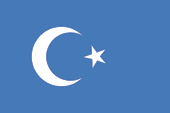 |
seit/since 1949, |
historische Flaggen – historical Flags: |
|
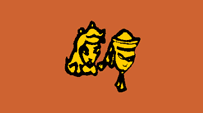 |
8./9. Jhd./cent., |
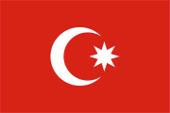 |
1864–1877, |
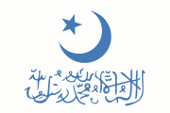 |
1933–1934, |
 |
1944–1946, |
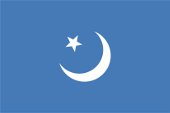 |
1944–1949, |
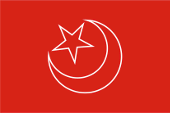 |
1943–1949, |
| Im Jahre 1640 entstand das Dsungarische Khanat der westmongolischen Oiraten unter Khungtaidschi Batur, dessen Bewohner den Namen Dsungaren bekamen. Im Jahre 1758 wurde das Land von China erobert. Immer wieder gab es Aufstande der Dsungaren gegen die chinesische Herrschaft, der längste uns bekannteste war die Revolte des Jakub Bek, der von 1865 bis 1877 einen unabhängigen Staat Kaschgarien im Westen Ostturkestans regierte. Ethnologisch waren im 20. Jahrhundert aus den Dsungaren wieder die Uiguren geworden, eine Rückbesinnung auf eine alte turkestanische Ethnie, die vom 8. bis zum 14. Jahrhundert existierte. |
In 1640, the Jungar
Khanate of the Western Mongolian Oirats was established under Khungtaiji
Batur, whose inhabitants were given the name Jungars (Dsungars). In 1758,
the country was conquered by China. There were repeated many revolts of the Jungars against Chinese rule, the longest and most known to us was the revolt of Jakub Bek, who ruled an independent state of Kashgaria in western East Turkestan from 1865 to 1877. Ethnologically, in the 20th century, the Jungars had become the Uyghurs again, a return to an ancient Turkestan ethnic group that existed from the 8th to the 14th century. |
| Mit der chinesischen Revolution von 1911 endete nicht nur die Monarchie, sondern der ganze chinesische Staat verfiel in einem Auflösungsprozess. Politische Armeen (Guomindang, Kommunisten, Monarchisten), nationale Truppen (Mandschu, Mongolen, Uiguren ...) und lokale Kriegsherren teilten das Land unter sich auf und führten einen permanenten Bürgerkrieg, zeitweise unterbrochen durch die Japanische Intervention (1937–1945). | In
context with the Chinese revolution of 1911 finished not only the monarchy, but the
whole Chinese state decayed in a dissolution process. Political armed forces (Guomindang, Communists, Monarchists), national troops (Mandshu, Mongol, Uyghurs ...) and local warlords partitioned the country among themselves and fought a permanent civil war, temporary interrupted by the Japanese intervention (1937–1945). |
| Die Uiguren, ein Turkvolk zwischen Tibet, Mongolei, Kasachstan und Kirgisien wurden durch den Zusammenbruch Chinas quasi unabhängig. Sie gründeten zwei mal einen eigenen Staat, und zwar 1933 bis 1934 die Islamischen Republik Ostturkestan und 1943 bis 1949 die Republik Ostturkestan. Dabei wurde jeweils eine blaue (hellblaue) Flagge mit Halbmond und Stern in Weiß gehisst. Blau ist die Farbe der tatarischen Völker (Turkvölker und Mongolen) und Halbmond und Stern stehen für den Islam, die vorherrschende Religion. Es wird zwischen 1943 und 1949 auch über eine grüne Flagge mit Halbmond und Stern in Gold berichtet, vielleicht repräsentierte sie eine andere politische Richtung oder Gegenregierung. Fakt ist, dass die Sowjetunion in dieser Zeit in das Geschehen eingriff und durch die Unterstützung Ostturkestans dessen Eingliederung in ihr Staatsgebiet anstrebte, ein Schicksal, das bereits alle Turkvölker Mittelasiens teilten. Möglicherweise stammt aus dieser Zeit das Projekt der sowjet-loyalen Volksrepublik Ostturkestan über dessen rote Flagge einige wenige Quellen berichten, ein Fakt der nicht untypisch für das Vorgehen der Sowjetunion in solchen Fällen gewesen wäre. Der uigurische Staat endete im Jahr 1949 unter den Schlägen der Chinesischen Volksbefreiungsarmee. Seither gilt die blaue Flagge als Flagge der uigurischen Nationalisten, die Ostturkistan in einem bis heute andauernden bewaffneten Untergrundkampf aus China herauslösen wollen. So brachen allein im Jahre 1996 45 bewaffnete Aufstände in 15 verschiedenen Teilen Ossturkestans aus. | The
Uyghurs – a Turk nation between Tibet, Mongolia, Kazakhstan and Kyrgyzstan
became – quasi independent by the collapse of China. They established
two-times an own state namely 1933 to 1934 the Islamic Republic of Eastern
Turkestan and 1943 to 1949 the East Turkestan Republic. On this occasion was hoisted each time a blue (pale blue) flag with half-moon and star in white. Blue is the colour of the Tatar nations (Turk nations and Mongols) and half-moon and star stand for the Islam, the predominant religion. There are also reports of a green flag with crescent and star in gold between 1943 and 1949, perhaps representing a different political direction or a counter-government. The fact is that the Soviet Union intervened during this period and, by supporting East Turkestan, sought its incorporation into its territory, a fate already shared by all the Turkic peoples of Central Asia. It is possible that the project of a People's Republic of East Turkestan loyal to the Soviet Union dates back to this period, and that a few sources report on its red flag, a fact that would not have been untypical for the Soviet Union's actions in such cases. The Uighur state was finished im 1949 under the strikes of the Chinese People's Liberation Army. Thereafter counts the blue flag as flag of the Uighur nationalists which want to separate East Turkestan in an until today persistant armed underground struggle from China. In this way broke out 45 armed riotings in 15 different parts of East Turkestan in the year 1996. |
| Über die historische Flagge des Reiches der Uiguren ist nichts bekannt. Das safrangelbe Tuch könnte ein Hinweis auf den Buddhismus sein, die ursprüngliche Religion der Uiguren, dem die Juguren in Zentralchina noch immer anghängen. | About the
historic flag of the Empire of the Uyghurs is nothing known. The saffron coloured bunting could be a hint to the buddhism, the original religion of the Uyghurs, to which the Yughurs in central China belong until today. |
| Quelle/Source: Flags of the World, 1) Wikipedia (DE), 2) Wikipedia (DE), Volker Preuß | |
| Landkarte – Map: |
|
| Quelle/Source: Freeware, University of Texas Libraries, modyfied by: Volker Preuß |
| Zahlen und Fakten heute – today's Numbers and Facts: | |
|
|
|
|
|
|
|
|
|
|
|
|
|
|
|
|
|
|
| 3. Jhd.
v.Chr. · das heutige Ostturkestan ist Herrschaftsgebiet der "Xiongnu"
(ethnisch ungeklärt) 5. Jhd. n.Chr. · Eroberung des heutigen Ostturkestans durch die Weißhunnen (Hephthaliten) 6.–8. Jhd. · die Osttürken (Alt-Uiguren) siedeln in der heutigen Mongolei, teilweise Abwanderung in das heutige Ostturkestan, dort Herrschaft regionaler Dynastien aus den Völkerschaften der Tibeter, Uiguren, Kirgisen, Mongolen und Dsungaren 745–840 · Osttürkisches Reich in der heutigen Mongolei 840 · das Osttürkische Reich der Uiguren wird von den Kirgisen zerstört, Abwanderung der Uiguren nach Ostturkestan (Xinjiang), Vermischung mit der dort ansässigen tocharischen und iranischen Bevölkerung, Herausbildung des heutigen Turkvolkes der Uiguren 9.–13. Jhd. · islamisches Karachaniden-Reich im Westen Ostturkestans, Reich der Uiguren im Osten Ostturkestans, allmähliche Ausbreitung des Islam über ganz Ostturkestan 1219 · Eroberung durch die Mongolen unter Dschingis Khan 1227 · Tod des Dschingis Khan, sein Reich wurde unter die seinen vier Söhnen aufgeteilt. Tschutschi erhielt Westsibirien; Ügedei erhielt das heutige China, Korea, die heutige Mongolei und Mandschurei und wurde zum Nachfolger und Großkhan ernannt; Tschagatai erhielt Ostturkestan, das heutige Tadschikistan, Kirgisien und Usbekistan; Sübedei erhielt das heutige Afghanistan und Turkmenistan. 15. Jhd. · Staat Mogolistan 17. Jhd. · Staaten Kaschgarien und Dschungarei 1758 · Eroberung der Dschungarei durch China (Nord-Ostturkestan) 1760 · Eroberung Kaschgariens durch China (Süd-Ostturkestan) 19. Jhd. · wachsender russischer Einfluss, islamische Aufstände 1871 · China tritt die Region Kuldscha (Yining) für 10 Jahre an Russland ab 10.10.1911 · Sturz der Monarchie in China, Bürgerkrieg und Unruhen, Ostturkestan (Uiguristan) wird de facto unabhängig 1916–1928 · Bürgerkrieg in China (Monarchisten gegen bürgerliche Guomindang und lokale Gruppen) 1928–1935 · Bürgerkrieg in China (Kommunisten gegen Guomindang und lokale Gruppen) 1933–1934 · Islamische Republik Ostturkestan 1937–1945 · Krieg in China (Kommunisten und Guomindang gegen Japan) 1944–1949 · Republik Ostturkestan 1945–1949 · Bürgerkrieg in China (Kommunisten gegen die Guomindang und lokale Gruppen) 01.10.1949 · Proklamation der Volksrepublik China Oktober 1949 · Einmarsch der Chinesischen Volksbefreiungsarmee in Ostturkistan, Angliederung an China, in der Folgezeit starke chinesische Besiedlung 1955 · Ostturkestan wird "Uigurische Autonome Region" 1964 · erste Kernwaffentests der chinesischen Armee |
| 3rd cent.
B.C. · the today's East Turkestan is inhabited by the "Xiongnu" (ethnical
unclear) 5th cent. B.C. · conquest of the today's East Turkestan by the White Huns (Hephthalites) 6th–8th cent. · the Eastern Turks (Old Uyghurs) settle in the today's Mongolia, partial migration to the today's East Turkestan, there rule of regional dynasties out of the nations of the Tibetans, Uyghurs, Kyrgyz, Mongol and Dsungars 745–840 · Eastern Turk Empire in today's Mongolia 840 · the Eastern Turk Empire of the Uyghurs becomes destroyed by the Kyrgyz, migration of the Uyghurs to East Turkestan (Xinjiang), mix with the there living Tokhar and Iranian population, nascence of the today’s Turk Nation of the Uyghurs 9th–13th cent. · islamic Empire of the Kara-Khanids in the west of East Turkestan, Empire of the Uyghurs in the east of East Turkestan, gradual expansion of islam over whole East Turkestan 1219 · conquest by the Mongols under Dshingis Khan 1227 · death of Dshingis Khan, his empire became partitioned under his four sons. Tshutshi got Western Sibiria; Uegedei got the today’s China, Korea and the today’s Mongolia and Manchuria and he became nominated to successor and Grand Khan; Chagatai got Eastern Turkestan, the today’s Tajikistan, Kyrgyzstan and Uzbekistan; Subutai got the today’s Afghanistan and Turkmenistan. 15th cent. · Staate of Mogolistan 17th cent. · Staates of Kashgaria and Dsungaria 1758 · conquest of Dsungaria by China (northern East Turkestan) 1760 · conquest of Kashgaria by China (southern East Turkestan) 19th cent. · increasing Russian influence, Islamic riotings 1871 · China cedes the Ghulja Region (Yining) for 10 years to Russia 10th of October 1911 · overthrow of the monarchy in China, civila war and agitations, East Turkestan (Uyghuristan) becomes de facto independent 1916–1928 · civil war in China (monarchists against bourgeois Guomindang and local groups) 1928–1935 · civil war in China (communists against Guomindang and local groups) 1933–1934 · Islamic Republic of Eastern Turkestan 1937–1945 · war in China (communists and Guomindang against Japan) 1944–1949 · Republic of East Turkestan 1945–1949 · civil war in China (communists against Guomindang and local groups) 1st of October 1949 · proclamation of the People’s Republic of China October 1949 · invasion of the Chinese People’s Liberation Army in East Turkestan, annexation to China, in the afteryears potent Chinese settlement 1955 · East Turkestan becomes "Uighur Autonomous Region" 1964 · first tests of nuclear weapons of the Chinese Army |
| Quelle/Source: Wikipedia (D), Flags of the World, World Statesmen |
| Turkestan (oder auch Turkistan) ist eine zentralasiatische Landschaft, die von zahlreichen Turkvölkern besiedelt ist. Turkestan ist durch die russisch-chinesischen Rivalitäten der vergangenen Jahrhunderte in Westturkestan (Kirgisien, Tadschikistan und Usbekistan) und Ostturkestan (Chinesisch-Turkestan) geteilt. Ostturkestan ist das Siedlungsgebiet der Uiguren, zwischen Tibet, Mongolei, Kasachstan und Kirgisien gelegen. Die Bezeichnung "Uiguren" ist zwar sehr alt und bezieht sich auf einen Turkstamm, wurde jedoch als gemeinsame Bezeichnung für alle Turkvölker Ostturkestans auf einem Turkvölkerkongress im Jahr 1921 in Taschkent beschlossen. Das Wort "Uigur" ist verwandt mit dem türkischen Wort "uygar" und heißt "zivilisiert". | Turkestan
(or Turkistan) is a central Asian countryside which ist settled by numerous
Turk nations. Turkestan is divided by the Russian-Chinese rivalries in the
past centuries in West Turkestan (Kyrgyzstan, Tajikistan and Uzbekistan) and
East Turkestan (Chinese Turkestan). East Turkestan is the homeland of the Uyghurs – situated between Tibet, Mongolia, Kazakhstan und Kyrgyzstan. The denomination "Uyghurs" is indeed very old and refers to one Turk tribe, but was adoped as common designation for all Turk nations in East Turkestan at a Turk nations congress in the year 1921 in Tashkent. The word "Uighur" is related with the Turkish word "uygar" and means "civilized". |
| Quelle/Source: Die Völker der Erde, Volker Preuß | |